David Gulpilil: Molly Reynolds documentary for Adelaide Festival tells story of indigenous film legend
The addictions and bad behaviour are in the past as screen legend David Gulpilil faces his own death in a new Adelaide Festival documentary.
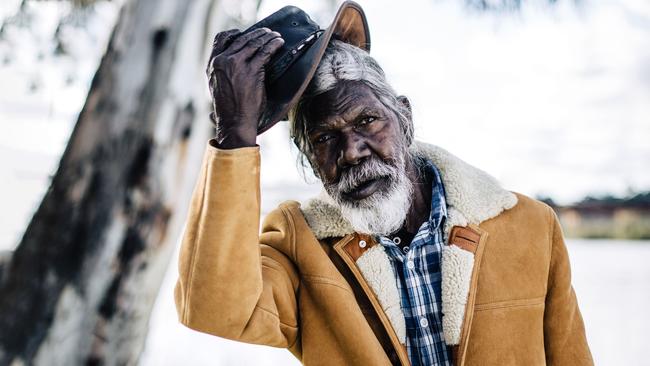
SA Weekend
Don't miss out on the headlines from SA Weekend. Followed categories will be added to My News.
Back in 2017, filmmaker Molly Reynolds sat with David Gulpilil while a medical specialist delivered a very plain-speaking diagnosis. There was nothing left to be done. Stage 4 lung cancer had taken hold and Gulpilil, an ex-smoker, also had emphysema.
“He said ‘you’ll be gone by the end of the year’, it was as direct as that,” says Reynolds.
Since then Reynolds, who had known Gulpilil for years through her film director partner Rolf de Heer’s collaborations with him, began working on a documentary that was meant to be posthumous, a tribute and remembrance of his searing screen presence and pioneering contribution to Australian film.
Only, Gulpilil outwitted his own fate by becoming the man who didn’t die. He continues to astound at 67, three years beyond his expected date of death, helped along by immunotherapy which has left him fragile but alive. He has enough life force left to be anticipating attending the launch of their documentary, My Name is Gulpilil, accompanied by a retrospective of his movies at the Adelaide Festival.
“There is no greater diversion for David than him watching his own films,” Reynolds laughs. “We open the documentary with David saying ‘I want to be remembered from generation to generation to generation’. He has an incredibly robust ego and it’s not overly ambitious of him – people swooned over him.”
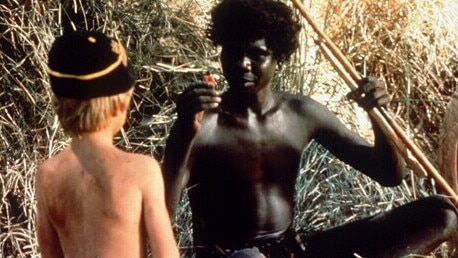
The story of Gulpilil, as told by David speaking direct to camera, goes back to his origins as a beautiful, young, fully tribal Yolngu man from the Northern Territory, an exceptional dancer and hunter among his own people who, because of that, was put forward when British filmmaker Nicolas Roeg was looking for someone to cast in the 1971 film Walkabout. Gulpilil, who had no English and little contact with the outside world, immediately understood the camera as a vehicle for performance and from the outset lit up the screen.
“His physicality is incredible,” says Reynolds. “David does not walk over this earth, he glides … OK, now he shuffles a little but he has got this remarkable physical presence.”
Having watched all of his work and seen so much of him, Reynolds knows him better than anyone and says his charisma in person and on screen is astonishing. Among friends he would tell stories that were totally captivating because his instincts were so developed.
“He is a storyteller and he has a delicious sense of humour,” says Reynolds. “When he’s on, he’s on. If he wasn’t constrained as a black fella he could have led the masses over a cliff. He is charismatic and his capacity to spellbind is incredible.”
Success was immediate but the effect on Gulpilil, a sweetly curious tribal teenager on a sophisticated film set with polished actors, was a rapid personal and psychological unravelling. Walkabout was followed soon after by Mad Dog Morgan, which put him in the company of US actor and wild man Dennis Hopper, a drug taker of some note. Gulpilil was wasted most of the time and Reynolds can look at old footage now and recognise when he was drunk or high. It was Australian actor John Meillon, a larrikin drunk even on a film set, who taught Gulpilil how to act while he was drunk.
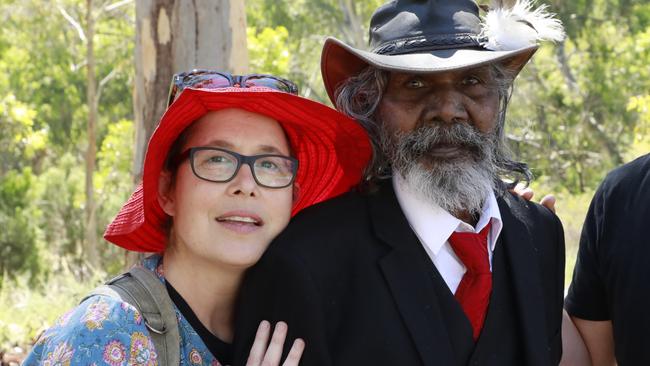
But the accolades kept coming and his career, while intermittent, never really stopped.
“After Walkabout, he went around the world; he was the first full-blood Aboriginal introduced to dine with the Queen and he met John Lennon, Clint Eastwood, Chuck Norris, Muhammad Ali, Jimi Hendrix,” says Reynolds. “That was at a time in the ’70s that was a very loose period and everyone was smoking a spliff.”
The man who introduced him to marijuana was Bob Marley and Gulpilil referred to it forever after by its rasta name of ganja. That, and alcohol, became a way for him to calm his naturally restless mind as he navigated situations that a few years ago he could not have believed existed.
“He didn’t know how to speak English when he was on the set of Walkabout. He learnt by listening,” Reynolds says. “For him, it must have been like he was swept up and landed on the moon.”
Despite his 2017 diagnosis, Gulpilil still wanted to work. The documentary was suggested as a possible vehicle by former Adelaide Film Festival director Amanda Duthie, who knew Reynolds knew Gulpilil well and that she had spent time in his home country of Ramingining.
Her partnership with de Heer had steered her work as documentary maker to include Twelve Canoes, 12 stories from the Yolngu people in Ramingining, and Another Country featuring Gulpilil talking about his people. She also made Balanda and the Bark Canoes, a companion film to de Heer’s feature, Ten Canoes.
She was well positioned to do the documentary but there was a problem; she had known Gulpilil since he stayed with them as a house guest while de Heer was making Ten Canoes. His addictions made him hard to be around and they had a fraught relationship that danced around de Heer who was the intermediary.
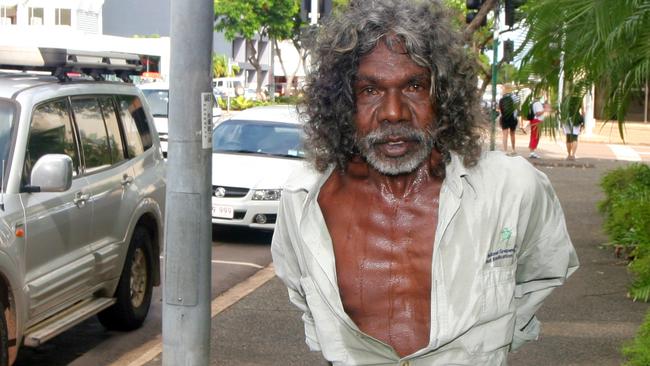
“David is a person of many addictions, or was,” says Reynolds. “Bouts of heavy ganja smoking and drinking would bring on psychotic episodes. He would behave incredibly badly and I think there are many people that he has kind of inflicted the worst side of himself on over the decades.”
In 2006 when de Heer was trying to make Ten Canoes with Gulpilil in a key role, Gulpilil would disappear on a drunken rampage for days at a time. It got so bad that, two months out from shooting, the producers decided to spend about $50,000 of the film’s budget putting Gulpilil into rehab. They got him to Darwin airport but Gulpilil, who also has a fear of flying, disappeared into one of the airport’s many bars and got so drunk he wasn’t allowed to board the flight. De Heer, who is good at getting out of tight situations, recast Gulpilil as Storyteller, bringing him back later to do the voice-over.
Years later de Heer flew to Darwin to visit Gulpilil who was in hospital, in prison, wasted and near death. He had gone north and not made a film for a while and had been living in the long grass, spending the days and nights stupefied with drink and marijuana. In 2011 he was sentenced to a year in jail for breaking the arm of his wife Miriam by throwing a broom in a drunken fight. He had no future that anyone could see. De Heer talked to him and asked what he wanted to do when he got out of jail. “I want to make a film,” he told de Heer. “With you.”
De Heer went back to his hotel room and nutted out a script for a movie about Aboriginal men and what they face in their 50s and 60s, with Gulpilil in the lead role.
That became Charlie’s Country, the lauded film that won Gulpilil best actor at the 2014 Cannes Film Festival in the specialist category, Un Certain Regard. A review in Hollywood Reporter called Gulpilil the defining face on screen of the indigenous Australian, and noted that the actor’s strong sense of self and where he came from gave the melancholy story its haunting beauty.
In the press notes with the film’s release, de Heer was frank. “My friend David Gulpilil is a troubled soul. I sometimes liken his plight to that of the great Australian painter Albert Namatjira who was likewise unable to reconcile the two cultures he had to live in, his own and ours.”
It was knowing so much of his volatile and unpleasant side that made Reynolds hesitate when Duthie first proposed the documentary as a way for Gulpilil to keep working.
“My first thought was, ‘but I don’t like David!’,” says Reynolds. “My second thought was, ‘but he is a legend’. What he has achieved in his lifetime is nothing short of remarkable. And then my third thought was that I had an impartial relationship with David so I could honour him.”
Gulpilil was keen. His most significant relationship in life was with the camera and had been since the early 1970s, and he always wanted to make money. He spent everything he earned along the way, some of it because of the relentless humbugging – somewhere between begging and a demand – that remains a cultural obligation derived from living off the bush and not being sure where your next feed is coming from.
Go to his home country at Ramingining and everyone will say they are related to Gulpilil, Reynolds says, and they are – through a complex system of kinship that bestows privilege as well as obligation.
“There is still a lot of humbugging that goes on and David is always going to be in that dilemma,” Reynolds says. “OK, if you’re a big man then share. So if you’re not sharing are you really a big man? … I think it is easier for David when he doesn’t have the resources to share.”
Living quietly in Murray Bridge with his friend and carer Mary Hood, a nurse from Darwin who he followed to South Australia, Gulpilil was keen to help Reynolds as much as he could. His memory is hazy and he has off days but Reynolds managed 67 shoot days with Gulpilil, coincidentally one for every year of his life.
The trick was patience. Gulpilil’s memory is addled from the drugs and illness but he is also naturally poetic, even in English which is one of his many languages. He could be chaotic and disappear down tunnels of thought Reynolds could barely follow but then he would be back to give a perfect summation of what he had been thinking about and was trying to say.
“In all the days when I interview him there was only one when he didn’t deliver, he was just so weary with the world,” Reynolds says. “He would talk for about an hour and usually, once we hit the one-hour mark … I would go ‘Gold, yet again, thank you David’.” There are no outside interviews and it is not a retrospective of his work although his past is always present.
Reynolds says the nature of David’s thinking, the universality and connectedness of things, crept into it and she consciously introduced elements of magic surrealism because it seemed so much part of his nature, this man whose surreal life included hunting in the Australian bush and smoking ganja with Marley.
A shot of Gulpilil lying in his coffin promises to be memorable and it was Gulpilil’s idea. He rang Reynolds and started saying he wanted to be wrapped in film in a cemetery box.
“I’m trying to catch up … ‘what?’,” Reynolds asked.
“You know, 35mm, in my coffin,” he says.
“But we’re shooting digital, David … and then I understand.”
Leave it with me, she tells him. On the final day of the shoot and in what became the closing scene of the film, Gulpilil lies in a coffin with 35mm film, chuckling with mad joy. It’s a brief moment, it was all his idea and it is quite startling to see, she says.
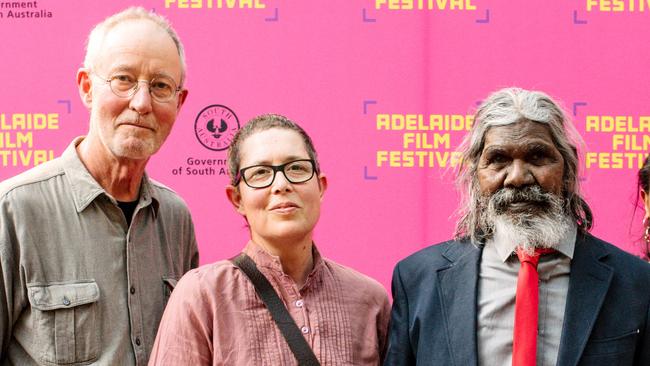
The film is in one sense about death, about Gulpilil’s inevitable end because no one lasts forever and he is already on borrowed time. Reynolds says she is surprised he has done as well as he has because he lacks the right toolkit for pending death. He is at the final stage of a life stranded between two cultures, of being answerable to both and belonging to neither.
His view now is that he has a white fella disease and only white fellas can treat him and the RAH oncology department, where he is a public patient, has saved him so far.
Every now and then talk surfaces of Gulpilil going back to country and de Heer and Reynolds have tried over the years to make sure he knows that if he wants to go back, they will make it happen. But now Reynolds knows him so well she understands better what he means when he talks about going home to die. It is Gulpilil poetry for saying that he wants in death to return to that place of connectedness that he lost and misses.
“He wants to go home because he doesn’t belong anywhere and if he went home now (to Ramingining) it would be absolutely horrible,” she says.
“One of his sisters died a horrible, miserable death because there isn’t proper care and his brother, the same. You’re placed under a tree and Gulpilil country is remote, you can only get there in the dry season, you can’t get there in the wet.”
They have promised Gulpilil that when the end comes, his body will be returned to Arnhem Land for his people to care for him the right way, with five to seven days of ceremony.
Seeing early footage of Gulpilil and listening to interviews done around the time of Walkabout and the South Australian Film Commission movie The Last Wave, with director Peter Weir, Reynolds was struck by how gentle, sweet and curious Gulpilil was. Now, she says, he has returned to that, perhaps with less curiosity but once again gentle and sweet. He has finally shed his addictions and stopped drinking while he was in prison in Darwin.
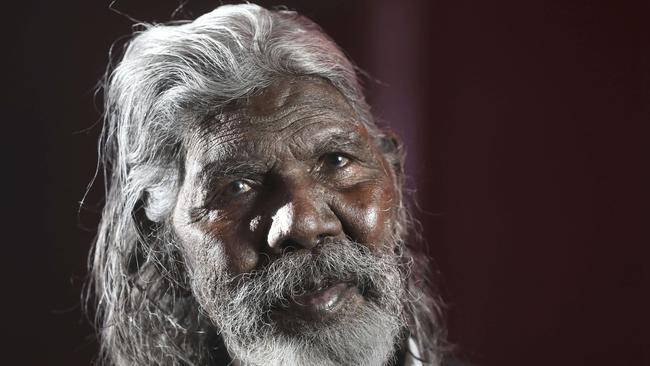
The ganja stayed but he stopped that too, only weeks before he was diagnosed, largely because of emphysema and the havoc it was wreaking on his lungs. He was still on a lot of prescribed medication but Mary Hood has helped bring them down to better levels and he is in the best place he has been for years. “As he says, ‘I was a drug and alcoholic’ but he no longer is and he is the loveliest person for it,” says Reynolds whose love and affection for Gulpilil have been one of the rewards of making the film.
She has got so much from working with him and admires his creativeness; her direction would involve talking with him at length about what they needed to do, repeating it because of his poor memory, then turning the camera on. After that, she could give the slightest cue and he would flow along seamlessly and perfectly, always aware of where the camera was and what it was seeing, the performer of old still holding on to his skills.
The film was one of the easiest Reynolds has ever financed and everyone she approached wanted to come on board. The main investor was the Adelaide Film Festival but because of COVID delayes, they partnered with the Adelaide Festival to bring the documentary to audiences next month.
David has seen the final cut and is thrilled it will play at the Festival. The launch itself will be a special occasion, attended by the man who refuses to die.
“It’s a film that can’t wait because David is still in a precarious position,” Reynolds says. “He is very excited. ‘A theatre with 1000 people … whoah …’ he says. He will be there and he will relish it.”
My Name is Gulpilil premieres at the Festival Theatre on March 12 at 8 pm as part of the Adelaide Festival The David Gulpilil Retrospective of eight films selected by Gulpilil will screen on March 13 and 14 at Mercury CX.




